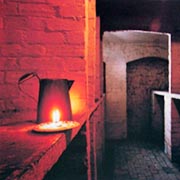What We’ve Been Up To - Week Ending 18/01/2014
One of the most encouraging things about the start of this new year 2014, is that there’s been a surge of people volunteering their help, time and expertise to the Regency Town House – which is rather heart-warming for all of us.
The first of these is Carolina – a student from Switzerland who has come to do an internship in the Office. Volunteers, of course, come in many different guises: some do hands-on restoration work, some spend hours in research facilities or pounding pavements for the My House, My Street project, others do all the planning of entertainments and Open Days, others toil endlessly trying to bring order to the different spaces we use...and many work on the upstairs floor, at the computers, developing state-of-the-art programmes or simply administrating the project.
Carolina’s work is mainly confined to the Silhouette project, Profiles of the Past, and she is steaming on ahead through lunch and tea breaks because, she says, she finds it all so fascinating. She is also surprised to find mainstream artists whose work she has only encountered before in her University classes turning up as silhouette artists: a genre with which she was not previously familiar.
Apart from Carolina five other people have come along ready to roll up their sleeves in such areas as carpentry, proof reading, etc. Etc.
Since the beginning of the year we now have a “new” room. Of course The House hasn’t spontaneously regenerated itself – it’s just that a former locked door, marked “No Admittance” has been flung open. Years of pigeon guano has been cleared from outside window sills, myriad small cracks and quite a few larger ones have been treated with the same kind of lime putty with which the walls were originally plastered, and dense and very stubborn layers of wall paper steamed, scraped and excised. A large sash window whose existence was unknown to most of the Volunteers, has also shed light upon the whole scene.
This room is situated on the first landing and called the “Dome Room” by everyone here. It was, when the house was first built in the 1820s, the Waiting Room, a chamber offering chairs, mirrors and, much to the relief of most, a new, hygienic flush lavatory. At this time, in England, women did not have access to public lavatories. Even when, much later in the 19th century, public conveniences were erected, most women would rather have eschewed their use than be thought “unfeminine” by anyone observing them going in or out.
So it’s likely that this small and somewhat ordinary room would have been the one held in higher esteem by women visitors than all the glories of the drawing room, dining room or parlour put together!




Add new comment